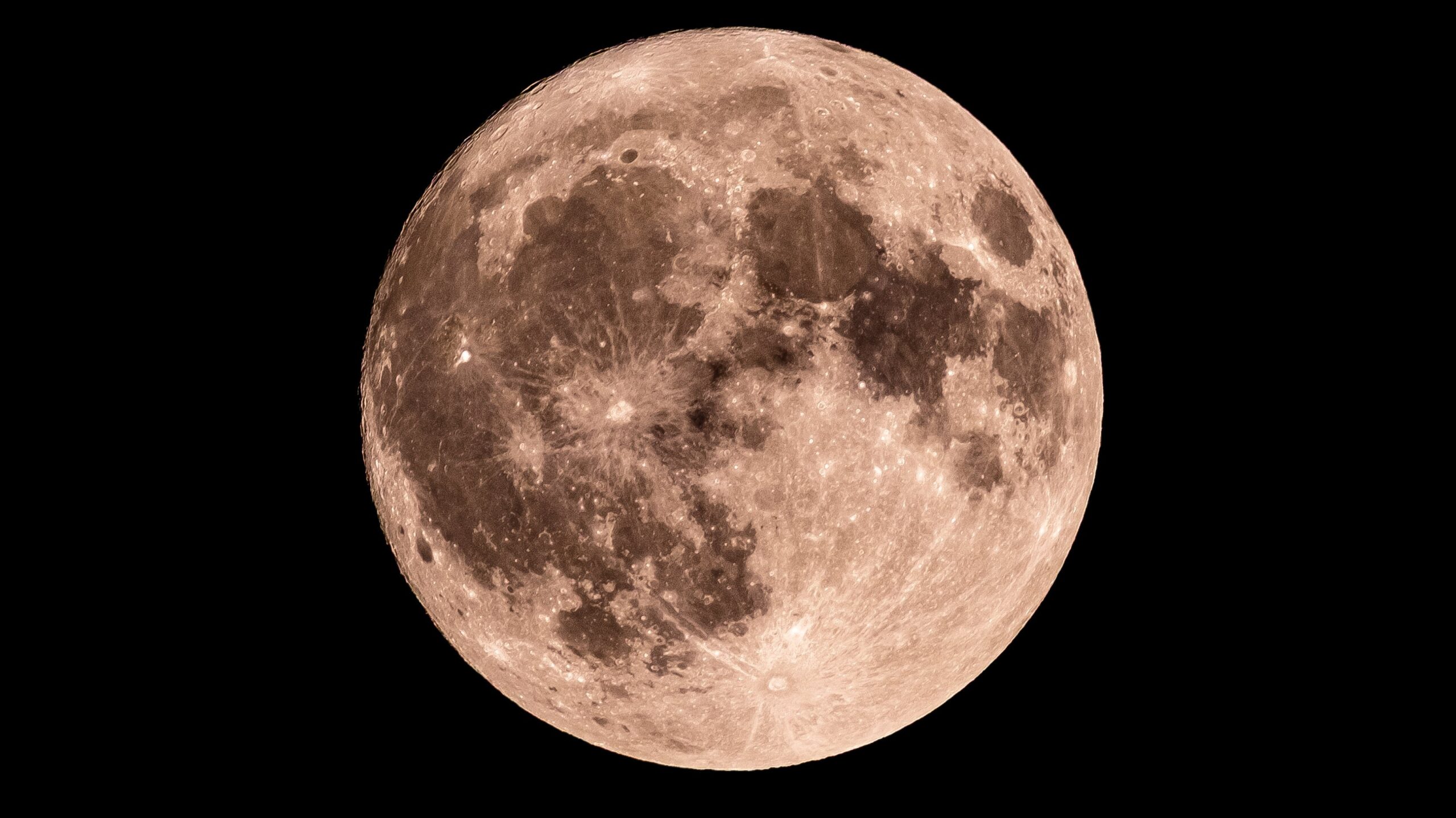Science
Full Moon and Total Lunar Eclipse Illuminate the Night Sky

The night sky on September 7, 2025, will witness a captivating astronomical event as it features both a Full Moon and a total lunar eclipse. According to NASA’s Daily Moon Observation, the moon will be completely illuminated, providing a spectacular view for stargazers around the globe.
The September Full Moon, often referred to as the “Harvest Moon,” will shine brightly, enabling observers to see numerous surface features even without any equipment. Key landmarks on the moon’s surface include the Aristarchus Plateau, Copernicus Crater, and Mare Crisium. For those equipped with binoculars, the Grimaldi Basin and Gassendi Crater can be observed. Telescope users will have the opportunity to view the Fra Mauro Highlands, showcasing the moon’s varied terrain.
While the total lunar eclipse will coincide with this Full Moon, it will not be visible from the United States or many parts of the Americas. This eclipse occurs when the Earth passes directly between the sun and the moon, casting a shadow that can create a stunning red hue on the lunar surface, a phenomenon often called a “Blood Moon.”
Understanding Moon Phases
Moon phases are the result of the moon’s 29.5-day orbital cycle, which alters the angles between the Sun, Moon, and Earth. This cycle affects how much of the moon is illuminated from our perspective on Earth. We consistently see the same side of the moon, but the amount of illumination changes, leading to different phases, including new moons, half moons, and full moons.
There are eight primary moon phases, which follow a repeating cycle:
– **New Moon**: The moon is positioned between the Earth and the sun, making it invisible.
– **Waxing Crescent**: A small sliver of light appears on the right side in the Northern Hemisphere.
– **First Quarter**: Half of the moon is lit on the right side, resembling a half-moon.
– **Waxing Gibbous**: More than half of the moon is illuminated, but it is not yet full.
– **Full Moon**: The entire face of the moon is fully illuminated.
– **Waning Gibbous**: The illumination begins to decrease on the right side.
– **Last Quarter (or Third Quarter)**: Another half-moon phase, but now the left side is lit.
– **Waning Crescent**: A thin sliver of light remains on the left side before it goes dark again.
Looking ahead, the next Full Moon will occur on October 6, 2025. This cycle of lunar phases continues to captivate both amateur and professional astronomers alike, offering a window into the complex mechanics of our solar system.
As the night unfolds, enthusiasts and casual observers will have a unique opportunity to engage with the cosmos, making the September Full Moon and total lunar eclipse an event not to be missed.
-

 Technology5 months ago
Technology5 months agoDiscover the Top 10 Calorie Counting Apps of 2025
-

 Health2 months ago
Health2 months agoBella Hadid Shares Health Update After Treatment for Lyme Disease
-

 Health3 months ago
Health3 months agoErin Bates Shares Recovery Update Following Sepsis Complications
-

 Technology4 months ago
Technology4 months agoDiscover How to Reverse Image Search Using ChatGPT Effortlessly
-

 Technology1 month ago
Technology1 month agoDiscover 2025’s Top GPUs for Exceptional 4K Gaming Performance
-

 Technology2 months ago
Technology2 months agoElectric Moto Influencer Surronster Arrested in Tijuana
-

 Technology5 months ago
Technology5 months agoMeta Initiates $60B AI Data Center Expansion, Starting in Ohio
-

 Technology5 months ago
Technology5 months agoRecovering a Suspended TikTok Account: A Step-by-Step Guide
-

 Health4 months ago
Health4 months agoTested: Rab Firewall Mountain Jacket Survives Harsh Conditions
-

 Lifestyle5 months ago
Lifestyle5 months agoBelton Family Reunites After Daughter Survives Hill Country Floods
-

 Technology4 months ago
Technology4 months agoHarmonic Launches AI Chatbot App to Transform Mathematical Reasoning
-

 Technology3 months ago
Technology3 months agoUncovering the Top Five Most Challenging Motorcycles to Ride




















